1 of 25
Downloaded 23 times

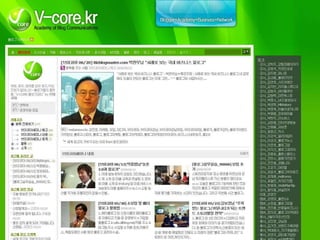




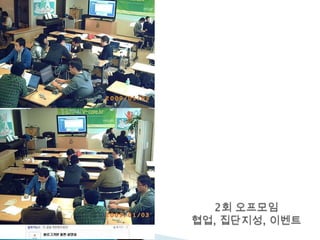



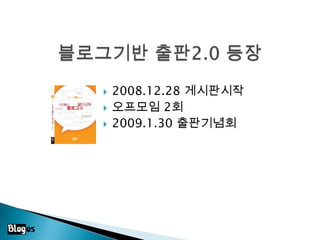





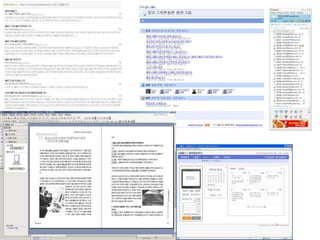
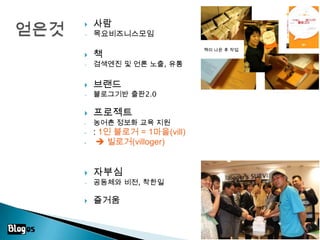



![[????] 2? 10?? SNS????? ?? ??? 29? ?? ??[Kmobile]2? 10?? ????, SNS? ? ???? ???? ????? ?? 29?? ????? ??? ??? ?? ??? ? ?? ?? ?? ?????. [?????] ????? ?? ?? Ī«?? 2.0 ????Ī» ?? ???? ?? ????? ??? ?????[????]2? 10?? Ī░?? ? ????Ī▒?? ????? ?? ??? ???? ??[????] SNS ???29? ? ?? ??, ??? ??, ????, ??, ?? ?? ??? ?? ???? ?? ?? ??? ???? ?? ? ????? ? ? ?? ?? ???? [EBS-???] ???? ?? ? ???](https://image.slidesharecdn.com/20-090917202443-phpapp02/85/20-22-320.jpg)


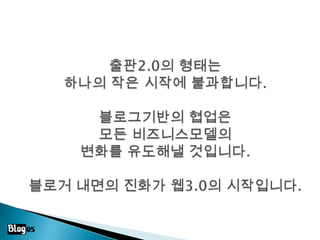
Ad
Recommended
??????????
??????????Youngmi Kang
?
???? "???" ???? ?? ???? ? ??? ????? ????
??? ?? ?????? ??? ???? ??? ?? ??? ?? ?????.
??? ??? ? ???? ?????? ???? ?? ??? ?? ???? ?????
???? ??? ?????. ??? ??? ?? ????????.
?? ????? ???? ?? ??? ??~~
???? ?? ?? ?? ?? ???????? ? ?????? ???
??? ??? ? ?? ??? ? ??? ?????.
??? ????? ?????? ?? ??? ?? ?????.
??? ??? ???? ????? ??? ???? ????? ?????? ??
?? ???? ??? ???? ???? ??? ??????.
??? ?? ???? ???? ???? ????? ????? ???? ?? ??,
?? ? ??? ?? ??? ? ?? ?? ???? ?? ??? ???????.
????? ?? ??? ?? ?? ??????? ??? ?????? ? ?? ????
???? ????? ??? ??? ?? ?? ? ???
???? ? ??? ???? ?? ?? ??? ???? ?? ??? ?? ?? ? ??.
????? ?? ?? ??? ?????.
? ???? ???? ???? ??? ???? ??? ?? ? ??? ????
? ???? ? ????? ? ???? ???? ?? ??? ??? ??? ?????.2013 ???????? ?? 300???????
2013 ???????? ?? 300???????JUNGEUN KANG
?
2013 ???????? ?? 300???????
http://cafe.naver.com/brandhow
http://facebook.com/nomad0115Sm lab basic_final
Sm lab basic_finalSue Hyun Jung
?
??????? ??????, ????? ????? ??? ?? "???? ??? ?? ???" ???? ???, ?? ??? ??, ???? ?? ?? ?? ?? '?????' ??? ?? ??????? ???? ????![??????] 2014???_?????????_???? ??
[??????] 2014???_?????????_???? ??thecirclefoundation
?
[??????] 2014???_?????????
? ?????/?? ?? ?? ???
http://bit.ly/1eSiRZu?????? ??????
?????? ??????Youngmi Kang
?
??????? ?? ??????? ?? ??? ??? http://socialwriting.tistory.com ? ??? ??????.??? ??? ??? ?? ?? ?????
??? ??? ??? ?? ?? ?????Leonardo Kim
?
????, Yes24 eBook, ?? eBook 3?? ??? ??? ????,
?? ??? ??? ?? ? ?? ?? ?????? ??? ??? ????.More Related Content
What's hot (18)
2013 ???????? ?? 300???????
2013 ???????? ?? 300???????JUNGEUN KANG
?
2013 ???????? ?? 300???????
http://cafe.naver.com/brandhow
http://facebook.com/nomad0115Sm lab basic_final
Sm lab basic_finalSue Hyun Jung
?
??????? ??????, ????? ????? ??? ?? "???? ??? ?? ???" ???? ???, ?? ??? ??, ???? ?? ?? ?? ?? '?????' ??? ?? ??????? ???? ????![??????] 2014???_?????????_???? ??
[??????] 2014???_?????????_???? ??thecirclefoundation
?
[??????] 2014???_?????????
? ?????/?? ?? ?? ???
http://bit.ly/1eSiRZu?????? ??????
?????? ??????Youngmi Kang
?
??????? ?? ??????? ?? ??? ??? http://socialwriting.tistory.com ? ??? ??????.Viewers also liked (20)
??? ??? ??? ?? ?? ?????
??? ??? ??? ?? ?? ?????Leonardo Kim
?
????, Yes24 eBook, ?? eBook 3?? ??? ??? ????,
?? ??? ??? ?? ? ?? ?? ?????? ??? ??? ????.How can teachers contribute to develop executive functions
How can teachers contribute to develop executive functionsaliceproject
?
The document discusses how teachers can contribute to developing executive functions in children through motor activity. It summarizes research showing that activities like aerobics, yoga, martial arts, and exercising bimanual coordination can improve executive functions. The study described in the document examines the effects of 10 weeks of playground motor activities on 4-5 year olds, with an experimental group receiving encouragement from teachers during activities. Preliminary results show improvements in motor skills and executive functions like inhibition and planning for the encouraged group. The study suggests structured motor activities and teacher involvement can effectively support child development.Prefrontal cortex
Prefrontal cortex15michellem
?
The document summarizes research on the prefrontal cortex. It describes the prefrontal cortex as the region behind the forehead that is involved in abstract thinking, problem solving, emotion processing, and executive function. It then discusses several studies that demonstrate the role of the prefrontal cortex in personality, addiction, and associating symbols and numbers. Damage to the prefrontal cortex, as in the case of Phineas Gage, can impact social behavior and emotional control. Dysfunction in this region is also associated with mental disorders.???? ?? ???? 8?
???? ?? ???? 8?gdiwelfare
?
?????? ???? 2015? 7??? 9??? ???? ?? ??? ?????. ?? 8? 20??? ? ??? ????? ??? ????? '???? ?? ????' 7, 8?? ?? ??????. 8? '??? ??? ??? ?? ??'? ??? ????????? ??? ???? ?????. ?? ??? ?????. Executive Function in Typical Children
Executive Function in Typical ChildrenRhonda DeYoung M.A. ILT, CPC
?
The document outlines the concept of executive functions (EF) as crucial cognitive skills, derived from the frontal lobe, that assist with task management, memory, attention, and self-control. It discusses five key abilities: working memory, inhibition, shifting, attention, and motor skills, which develop at unique timeframes throughout childhood and adolescence. Additionally, it highlights the potential developmental delays in typical children and calls for clinical labeling to provide support and understanding in educational settings.The prefrontal cortex: What is it? Its functions, Its dysfunctions and some e...
The prefrontal cortex: What is it? Its functions, Its dysfunctions and some e...hermosadory
?
The prefrontal cortex is located in the front part of the brain's frontal lobe. It regulates both short-term and long-term decision making, creates strategies, adjusts actions in changing situations, and controls emotions and impulses. Dysfunction in this area has been linked to disorders like schizophrenia, bipolar disorder, and ADHD. One study found that having subjects memorize a 7-digit number versus a 2-digit number reduced their self-control when choosing a snack. Two other studies investigated the prefrontal cortex's role in conscious monitoring and spatial working memory precision.Anatomy And Connections Of Prefrontal Cortex
Anatomy And Connections Of Prefrontal Cortexfarhoudif
?
The document discusses the anatomy and connections of the prefrontal cortex. It describes three main parts of the lateral prefrontal cortex - the dorsolateral, ventrolateral, and frontopolar cortices - and their connections. The dorsolateral prefrontal cortex is involved in spatial attention through its connections to parietal and occipital regions. The ventrolateral prefrontal cortex receives inputs related to action imitation, gestural communication, and object identification from parietal and temporal regions. The ventral prefrontal cortex receives auditory inputs related to spatial information and object recognition from superior temporal regions.Childhood anxiety
Childhood anxietyRooban Thavarajah
?
This document provides a summary of childhood anxiety disorders, including:
- Selective mutism, post-traumatic stress disorder, obsessive compulsive disorder, phobias, and generalized anxiety disorder.
- It discusses the classification, etiology, signs and symptoms, and treatment options for each disorder.
- Cognitive behavioral therapy and selective serotonin reuptake inhibitors are commonly used to treat childhood anxiety disorders.Ad
Similar to ????? ??20 (20)
????_ Web2.0?? pr??? ???? ?? ???
????_ Web2.0?? pr??? ???? ?? ???Seungtae(Peter) Kim
?
Wrote a 20-page academic paper about blogging, explaining how Public Relations practitioners can use it as a tool in the age of Web2.0??? ??? ??? ??? ???
??? ??? ??? ??? ???widecomms
?
????? ?????? ????? ??????????(www.widecomms.net)? ??? ??? ??? ??? ??????.
??? ??? ? ???? ??? ??? ???? ??? ???!Ad
More from Youngmi Kang (11)
????? ??20
- 1. ????? ??2.0??? ????? ?2.0?????? ?????? ??? ???
- 3. ????: ?? ??? 60? ???
- 4. ????? ????1588 ? ???
- 7. 2? ??????, ????, ???
- 11. ????? ??2.0 ??2008.12.28 ????????? 2?2009.1.30 ?????
- 14. Blogger's Survival "▓╗└ŽĖ▀╩ų" ??????????????
- 15. ???2.0 ?? ????,??,??,??,????IT ?? ???????, ????, ???,SMS, ??????????? ?, ???? ?? ????????? ??, ????,???,
- 16. ??????????????? : ???/?????? ??? ????????? : ??????????? : ?????SMS ?? ??? ?? : ?????? ?? : ???????? ?? ???? ??? ?????????????????? : ????????? ?? ????? ? ? ?? : ???? ???? ???? ???????: ISBN????? ?????HOW??????????????????????????????3????
- 18. ?????????????????? ? ?? ??, ?????????? ??2.0 ??????? ??? ?? ??
- 19. :1? ??? = 1??(vill)
- 20. ? ???(villoger)??????? ??, ??????
- 21. ??? ?? 1,000?????30?- ?? webplantip.com ???
- 22. [????] 2? 10?? SNS????? ?? ??? 29? ?? ??[Kmobile]2? 10?? ????, SNS? ? ???? ???? ????? ?? 29?? ????? ??? ??? ?? ??? ? ?? ?? ?? ?????. [?????] ????? ?? ?? Ī«?? 2.0 ????Ī» ?? ???? ?? ????? ??? ?????[????]2? 10?? Ī░?? ? ????Ī▒?? ????? ?? ??? ???? ??[????] SNS ???29? ? ?? ??, ??? ??, ????, ??, ?? ?? ??? ?? ???? ?? ?? ??? ???? ?? ? ????? ? ? ?? ?? ???? [EBS-???] ???? ?? ? ???
- 23. Ī░???? ???? Ī░ ?? ??? 84????17???? 8????? 0.5??- ?? webplantip.com ???
- 25. ???????????? ?? ???? PR???? ????? ??? ?? ?? ??? ???????? ??? ??? ???? ?????? ?????? ??-???? ???? ?????? ??-??? ??? ??? ?????? ?? ???? ???? ??? ??? ??-CSR??? ?? ??? ??? ?? ???
- 26. ??? ???? ??>[1? ?? 500? ??]??? ©C 80??(?????)??? ©C 10???????? (?? ? ??)- 10?????? 30~50? ???? ???? ????? ??? : ?? ?? 300? ??? ???????? : ?????? ?????????? ???? 100?? : ?? ??? ??? ???
- 27. ??2.0? ??? ??? ?? ??? ?????.?????? ????? ??????? ??? ???? ????.??? ??? ??? ?3.0? ?????.
